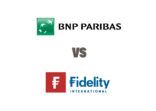William Yuen, Invesco
The expanding middle-class population across Asia has been a major investment theme in 2018. Fund managers believe that rising salaries will translate into demand for better quality products in the region.
Managing a fund that taps into this trend carries specific challenges. They include the ability to forecast a company’s profitability that depends on fast changing consumer preferences. It also requires discipline to divest of rallying stocks, in order to maintain the fund’s allocation, thereby leaving some returns on the table.
Yuen has managed the Invesco Asia Consumer Demand Fund since its inception in March 2008. He seeks investments in companies with which consumers have a direct, day-to-day contact.
Yuen’s investment process starts with the fund’s benchmark, the MSCI Asia (ex-Japan) Index, which comprises 13,000 companies. He first excludes materials, energy and industrials, which leaves him with 7,000 consumer-related companies. He then excludes companies with market cap below $400m due to liquidity concerns.
“I do not believe there is a perfect solution for screening but the process is meant to narrow down the universe of investable stocks,” Yuen said. In the end, he actively monitors around 300 names.
“I would put myself in a situation of the management of a company, to try to forecast its performance over the next three to five years, instead of just giving a target for the next quarter or two,” he said. “We also look at how focused the company is on their core business.”
“We do not set a hard number for the revenue that has to be derived from local markets. But by our statistics in the holdings, around 90% of the companies generate nearly all of their earnings from either local or regional economies,” he said.
The average turnover of the fund is less than 50%, meaning that the holding period is two years on average, according to Yuen. At the end of January, the fund held 65 companies, 62.4% of them in China, Hong Kong and Taiwan, FE data shows.
The high weighting to the Greater China reflects the consumption trends in the region, Yuen said. Despite the economic growth slowing down, Chinese companies are still able to exert substantial global influence.
The scale also matters. “The whole consumer sector of the Philippines and Indonesia may consist of around 20-30 players in each country, which is an equivalent to China’s newly-listed consumer-related companies every year,” Yuen said.
As of the end of February, Yuen’s fund had an overweight position in the assets in China, India and Indonesia with respect to its benchmark. In terms of sector weighting, it held 28.3% of assets in consumer discretionary and 18% in consumer discretionary, according to its factsheet.
Higher-end consumption?
In 2018, investment professionals have eyed on the expanding population of middle class across Asia, especially in China. The phenomenon of more middle class consumers pursuing higher quality products would drive several sectors.
Fan Cheuk-wan, HSBC Private Bank head of investment strategy in Asia, stressed the potential of China’s healthcare sector stemming from a growing middle class and its increasing spending power, which she believes will drive the demand for pharmaceutical products and high-quality healthcare services.
Listed alcohol manufacturers should also benefit this year as Chinese middle class consumer tastes shift to high-end products, according to Mandy Chan, head of China and Hong Kong equities at HSBC Global Asset Management.


















